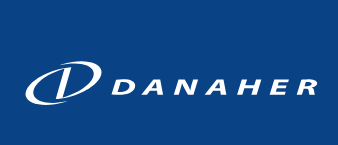



Danaher recently reported a 4 percent year-over-year increase in its third quarter revenues, which included a 6 percent rise in life sciences segment revenues and an increase in its diagnostics segment of almost 7 percent.
For the three months ended Sept. 27, total revenues reached $5.04 billion, up from $4.85 billion a year ago. It beat the consensus Wall Street estimate of $5.02 billion. Core revenue growth was 5 percent, and excluding the company's dental segment which was spun into its own publicly traded firm, Envista, last month, Danaher's core revenue growth for the third quarter of 2019 was 6 percent, the Washington, DC-based conglomerate said.
In life sciences, revenues grew to $1.70 billion from $1.60 billion in Q3 2018. Core revenue growth was nearly 7 percent, Danaher President and CEO Thomas Joyce said on a conference call, adding Beckman Coulter's life sciences business grew in the double digits, thanks in part to new product introductions and share gains in the flow cytometry business.
Core revenues for the firms mass spectrometry business, Sciex, declined slightly year-over-year, which Joyce attributed to high growth in Q3 2018 leading to an unfavorable comparison. Joyce also noted some softness in North America and timing issues for product launches between the third and fourth quarters of 2019 as contributors to Sciex's decline. Meanwhile, Integrated DNA Technologies grew in the double digits, with particular strength in next-generation sequencing and synthetic biology.
In diagnostics, revenues grew to $1.60 billion from $1.50 billion a year ago. Core revenues were up 8 percent. Beckman Coulter's diagnostics business had its fourth consecutive quarter of mid-single digit revenue growth, with Joyce mentioning the DxH 900 hematology analyzer and the DxA 5000 laboratory automation system as key growth drivers. Earlier this month, the DxA 5000 system received 510(k) clearance from the US Food and Drug Administration.
Cepheid's core revenues increased in the double digits year over year, reaching nearly $1 billion in revenue, Joyce said.
Among Danaher's other diagnostics businesses, Joyce noted both Radiometer and Leica Biosystems as significant growth drivers, with Radiometer's core revenue growth increasing in the double digits. Leica also delivered double-digit core revenue growth, led by North America and Japan, Joyce said.
Among Danaher's other segments, revenues in environmental and applied solutions rose half a percentage point to $1.08 billion from $1.07 billion in Q3 2018.
Before the dental business was spun off into Envista, it posted $659.3 million in the recently completed quarter, down 3 percent from $679.5 million a year ago.
Earlier this week, Danaher announced it would sell three of its life sciences businesses to Sartorius for $750 million in order to obtain regulatory approval for the company's pending $21.4 billion acquisition of General Electric's Biopharma business.
In Q3 2019, Danaher's R&D costs grew 6 percent year over year to $318.9 million from $301.2 million, while its SG&A spending rose 6 percent to $1.66 billion from $1.56 billion.
The firm posted a profit of $673.9 million, or $.89 per share in the recently completed quarter compared to a profit of $663.7 million, or $.93 per share, in Q3 2019. Adjusted EPS was $1.16, coming in slightly above analysts' average estimate of $1.15.
Danaher finished Q3 2019 with $14.25 billion in cash and cash equivalents.
For the fourth quarter, Danaher expects EPS in the range of $1.06 to $1.09 with non-GAAP EPS expected to be between $1.32 and $1.35. Its full-year 2019 EPS forecast was adjusted to a new range of $3.38 to $3.41 from $3.38 to $3.43. Adjusted EPS was changed to a new range of $4.74 to $4.77 from a previous range of $4.75 to $4.80.
In early morning trading on the New York Stock Exchange, Danaher's shares were down 1 percent to $136.88.